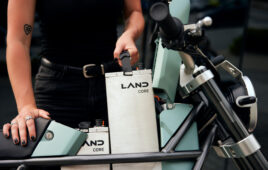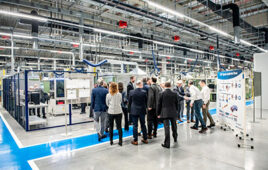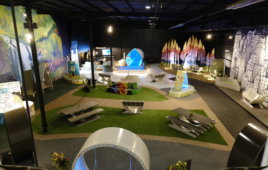Three trends are driving the design of new turbines. One is a turbine for less than ideal wind farm locations, which might have lower winds and more turbulence. the other trends include greater reliability and larger designs.
As developers look to build in more challenging locations, OEMS have responded with a variety of designs. For instance, Leitwind’s LTW77 has modular construction making it easy to transport over and assemble on rough terrain. Likewise, the company’s LTW101 and LTW104 feature higher energy yields and improved availability. With about 3.500 full load hours (gross AEP at 6,5 m/s) the company says the models are some of the most efficient on the market.
All turbine OEMs say they are working on reliability improvements. For most turbines, the improvements will lower operating costs. Upgrades will span all through the machine, from pitch to hydraulics to yaw and to the gearbox.
Suzlon, GE, and Gamesa also have large-rotor units intended for lesser windy regions. Marketing directors have recognized that there are a lot of moderate wind sites around the globe. Why not a turbine for them? Such units would allow placing turbines closer to loads–cities. One example is Acciona. The company’s AW3000/116 has a larger rotor, which makes it well-suited for less windy sites (those with low to medium wind speeds). Expect larger rotors and taller towers to go together.
There also seems to be a growing number of community wind and smaller-scale turbines. For instance, Cleveland-based manufacturer of welding products Lincoln electric recently installed a 2.5-MW turbine and expects to save about $500,000 a year in power costs. It’s one of the largest urban wind turbines in North America and manufacturer Kenersys‘ first in the U.S.
Network compatibility is another feature that is becoming increasingly important. Turbines like Dewind’s D9.2 is said to offer a reliable drivetrain that ensures good grid support. The design operates with dynamic reacitve power to support the grid though extreme events, while a generator works at high voltage to connect to the grid directly though a synchonizing switch without power conversion electronics, converters, or a min power transformer.
Direct drives may be another trend. The design gets rid of the problematic gearbox but then generators grow in size and complexity. The trend will continue if neodymium, a material ideal for high-flux-density magnets, says relatively inexpensive. Should Chinese sources decide to withhold the material from world markets for internal use, prices will climb. Then it will be necessary to develop new sources. However, creative electrical engineers have already suggested there are ways to build efficient generators without the material, or less of it.
One obvious trend in utility-scale turbines is taller towers. Taller towers make sense because their cost is justified through increased power production. Taller towers also allow larger turbines to enter the market and allow putting them in less turbulent winds, thus decreasing wear and fatigue. In the U.S., the 80-m tower is about standard but another 20m will make best use of the larger rotors. In Europe, the 100-m tower is standard and will soon be here.
However, taller towers have their challenges and limitations. Going forward, OEMs are increasingly interested in reducing their cost (because the tower cost portion of the overall turbine is increasing from 10% to 20% of total cost), the interaction between tower and turbine, cutting tower transportation costs, and reducing weight. WPE
Windpower Engineering & Development
Filed Under: Green engineering • renewable energy • sustainability




